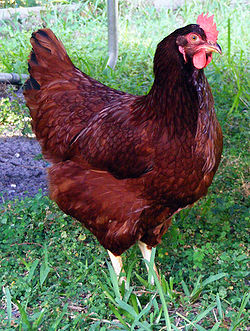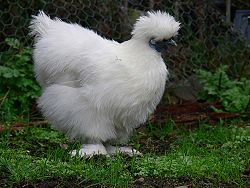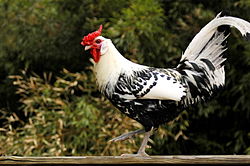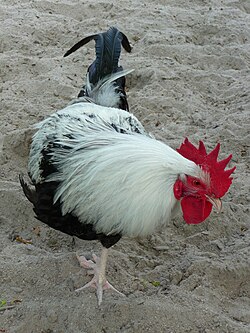Self
Self-coloured chickens are those which display one solid colour without patterning of any kind.
| Colour | Cock | Hen | Notes |
|---|---|---|---|
| Black |  |  | Green iridescence is desired for "beetle black" show chickens. |
| Blue |  Sumatra |  dark blue-laced Andalusian | |
| Splash or Blue Splashed White |  Sumatra |  Silkie | Splash is the homozygous form of Blue |
| Buff |  |  | |
| Lavender |  |  Red lavender | |
| Red |  |  | Red is the intensified version of Buff |
| White |  |  Silkie Silkie |
























































